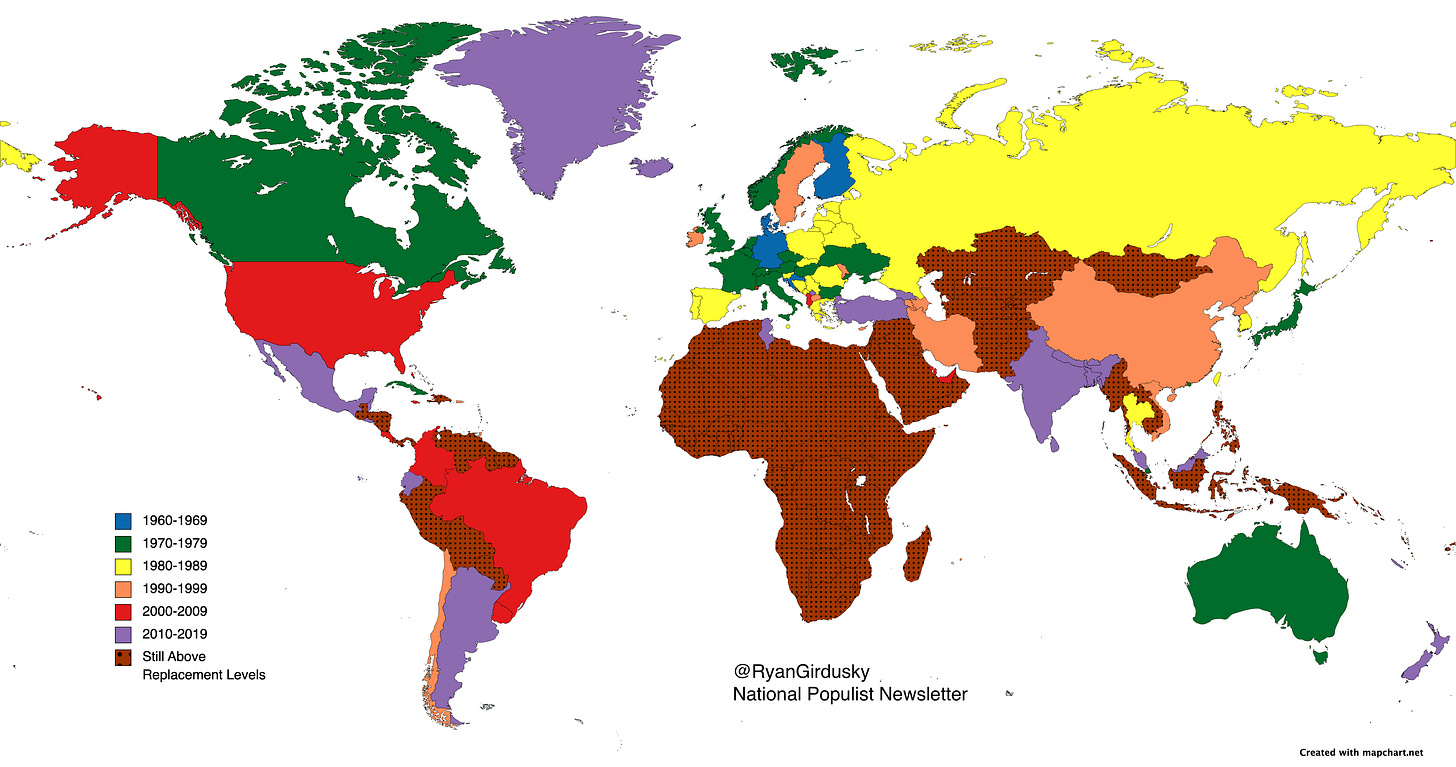People, in general, live in the past. If you ask them what they think a large family looks like, they may describe a family from Mexico, Puerto Rico, Italy, or India that existed decades ago.
The truth is that the world has seen a massive decline in fertility since the 1960s when the first countries began slipping under replacement levels. For those who don’t know, women need to have 2.1 children to reach the replacement level where one generation replaces themselves. Anything under that number means a historical population will decline gradually over the next few decades.
You may have heard that Eastern Europe and East Asia are under replacement levels, but as of 2020, when the World Bank released its most recent numbers, most countries were under the 2.1 threshold. Many of those still above replacement will slip below that number by the decade's end.
Some countries have been under replacement levels for a long time. If you were born during the last year, Germany had a fertility level above the replacement level. You’d be 54 years old today. That’s one of the oldest in the books. The last large year for births is too old to get pregnant and reverse trends which means population contraction is not only likely but guaranteed. Compare that to a country like Ireland or Mexico. If you were born the last year, either of those countries had a fertility rate above the replacement level. You’d be 33 years old in the case of Ireland or eight years old if you were Mexican. They also had relatively high fertility levels in the years after they slipped under the magic 2.1 number, which means they could turn around a very likely population decline.
Some countries, big and small, are already in population contraction. Japan, China, Russia, Romania, Greece, Puerto Rico, Cuba, South Korea, and North Korea are all seeing their populations decline. More will follow on every continent aside from Africa by the end of the decade, and that has significant geopolitical and economic ramifications for the United States and our allies. I’ll write more about that in a later piece.
Here’s a detailed map of the last time almost every nation had a fertility level of 2.1 children per woman.
Just one quick note: these numbers mostly come from the World Bank, with some countries like Monaco and Tunisia having disputed figures. I tried my best, given what was readily available.



